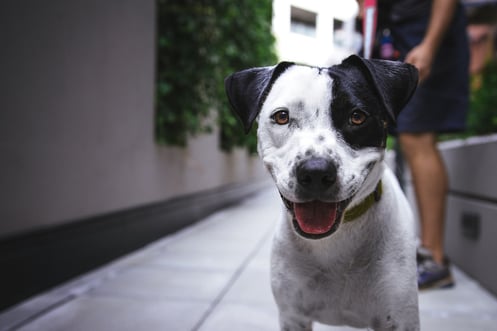Why Are There Such Strict Rules For Moving Pets To A Foreign Country?
Published on: May 12, 2022 | Author: Starwood Pet Travel

If you take your dog to doggie day care – or to the neighborhood dog park – the last thing you want is for someone else’s sick dog to be there, too. Your pup could be infected, perhaps with a serious or even life-threatening disease. Now imagine that day care facility or dog park is actually a foreign country. Now it’s easy to understand why there are such strict rules for moving pets from one country to another.
All countries are protective of their industries and other economic resources. But when it comes living creatures – the wildlife and pets and humans already in place - countries can be as single-minded as a mother bear with cubs. The strict rules they enact can be supremely frustrating (and often confusing) when it comes to moving your beloved dog or cat, but when it comes right down to it, you wouldn’t have it any other way.
What’s really at stake here?
Rabies-free countries are determined to stay that way.
A relatively small number of countries around the world are considered to be rabies-free. Many of these countries are islands, from tiny Guam to larger countries like Britain to the entire island-continent of Australia. But a number are individual countries in Europe and elsewhere. Because rabies doesn’t exist as a health threat in these countries, they are at greatest risk from potential rabies importation.
Accordingly, they typically have the most stringent pet health requirements in place. Many require proof of rabies vaccination and also further testing to validate the efficacy of the vaccine. They cannot afford to take even the smallest risk that your pet will bring unwanted disease that could be spread to residents, other pets or native animal populations.
Rabies-controlled countries don’t want to backslide.
In many more countries around the world, rabies exists but is considered “controlled” because each country has mandatory rabies-specific animal health policies and procedures in place. Typically these rules include required vaccinations for all at-risk pets and vigilant alertness for sick animals in the wild. To maintain their rabies-controlled status, these countries enact pet importation requirements that reflect local immunization policies and procedures.
There are also many countries where rabies is a potentially serious problem because it is not controlled. No one wants to invite rabies inside their borders, so the rules that govern moving dogs and cats to a foreign country vary according to where you have been living as well as your destination country.
The rules protect against more than rabies.
Parasites like ticks, fleas and tapeworms are easily transmitted from one animal to another and, in some cases, to humans. Parasites can carry debilitating or deadly diseases. If allowed to escape into the native animal population, newly-introduced parasites or diseases could literally wipe out populations, devastating a country’s eco-structure and general sense of well-being. That’s too high a price for countries to pay.
For this reason, many countries require examinations, vaccinations and/or additional treatments and blood testing in order to consider your pet acceptably healthy for entry.
As a pet parent, you can easily relate to the motivations behind all these protections. The strict rules may seem like the ultimate pain when you’re busy with a myriad of other moving-related details and you’re pressed for time to plan your move, but the reality is: your pet’s safety is of paramount importance to you. It’s no different for the people and pets where you’re headed, so your goals are exactly the same.
Knowing that should help ameliorate some of the frustration of having to jump through so many pet health requirement and paperwork hoops.
Starwood Animal Transport has rebranded to Starwood Pet Travel. We are still the same great company with the best team, just now with a slightly different name.
Subscribe to the Blog
Enjoy our content? Get them sent to your inbox!
Subscribe Now!


